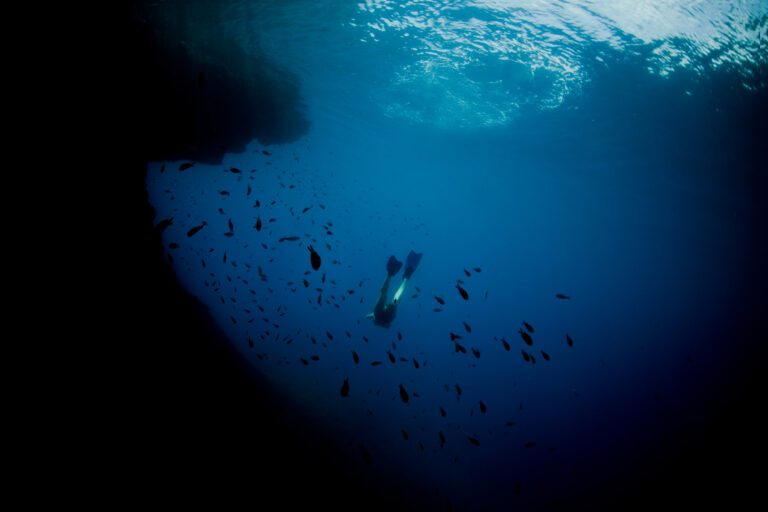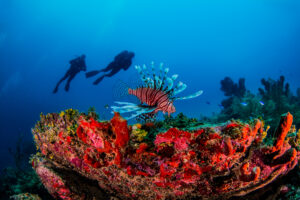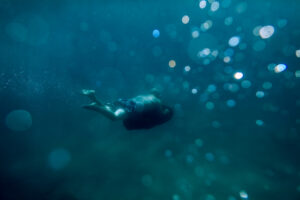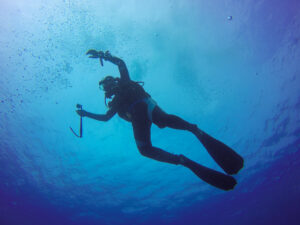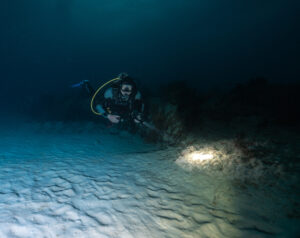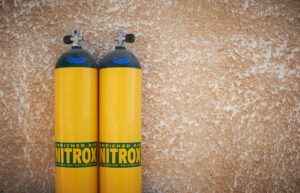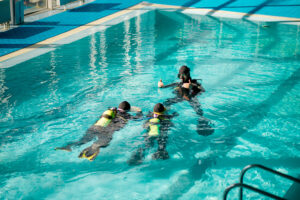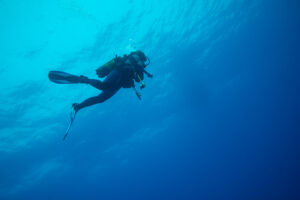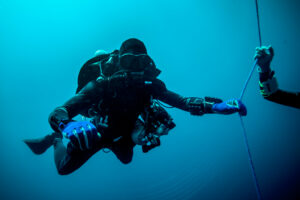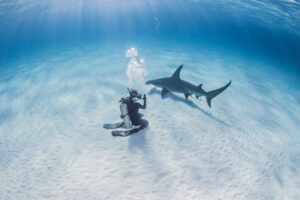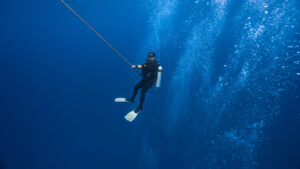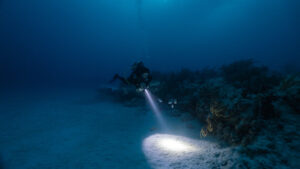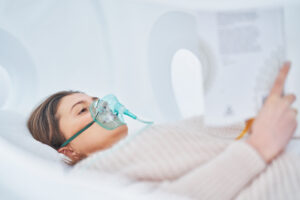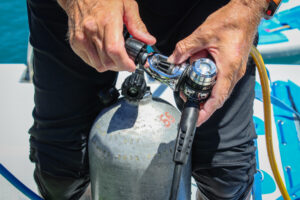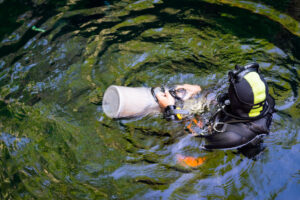What is Nitrogen?
Nitrogen is an inert gas, meaning it does not readily participate in chemical reactions. It constitutes approximately 78% of the Earth’s atmosphere, with the remaining 22% made up of oxygen, trace gases, and water vapor. While nitrogen is essential for various biological processes and is harmless when inhaled at normal atmospheric pressure, it poses unique challenges for scuba divers. Nitrogen can cause nitrogen narcosis and decompression sickness, both of which can have severe consequences for divers. This entry aims to explore the role of nitrogen in scuba diving and discuss the risks and precautions associated with these conditions.
Nitrogen Narcosis
Nitrogen narcosis, also known as inert gas narcosis, rapture of the deep, or the “martini effect,” is a reversible alteration in consciousness that affects scuba divers who breathe air under increased pressure. This phenomenon typically occurs at depths greater than 100 feet (30 meters) but can vary depending on the individual and other factors.
When a diver descends to greater depths, the partial pressure of nitrogen increases, leading to a higher concentration of nitrogen dissolving into the diver’s bloodstream and body tissues. Nitrogen narcosis occurs when this increased nitrogen concentration affects the central nervous system, causing symptoms similar to those experienced under the influence of alcohol or sedatives. These symptoms can range from mild impairment in judgment and motor skills to severe confusion, hallucinations, and loss of consciousness.
Although the exact mechanism behind nitrogen narcosis is not fully understood, it is believed that nitrogen disrupts the normal function of nerve cell membranes. The severity of symptoms and the depth at which they occur can vary among divers, and even for the same diver on different dives.
Preventing and managing nitrogen narcosis involves planning dives to avoid excessive depths, ascending to shallower depths if symptoms occur, and using gas mixtures with a reduced nitrogen content, such as nitrox or trimix. It is crucial for divers to recognize the signs of narcosis and monitor their dive buddies for any changes in behavior.
Decompression Sickness
Decompression sickness, commonly referred to as “the bends,” is a potentially life-threatening condition that results from dissolved nitrogen forming bubbles in the bloodstream and tissues during ascent. As a diver descends, the pressure increases, causing more nitrogen to dissolve in the blood and tissues. When ascending too quickly or without proper decompression stops, this dissolved nitrogen forms bubbles, which can cause pain, neurological symptoms, and even death.
Decompression sickness can manifest in various forms, ranging from mild joint pain to severe neurological and cardiovascular symptoms. Common symptoms include joint and muscle pain, skin itching or rashes, dizziness, fatigue, difficulty breathing, and in severe cases, paralysis, unconsciousness, or death.
To prevent decompression sickness, divers must follow established decompression procedures, which involve ascending slowly and performing decompression stops at specific depths. Divers should also stay well-hydrated, avoid alcohol before diving, and monitor their physical fitness to minimize the risk of decompression sickness.
Additionally, divers can use dive computers and decompression tables to plan their dives according to their depth, time, and breathing gas mixture. Using enriched air nitrox, which contains a higher percentage of oxygen and a lower percentage of nitrogen, can help reduce the risk of decompression sickness by reducing the amount of nitrogen absorbed by the body.
Treatment and Precautions
If a diver suspects they have decompression sickness, they should seek immediate medical attention. The primary treatment for decompression sickness is the administration of 100% oxygen and hyperbaric therapy, where the affected individual is placed in a pressurized chamber to help dissolve nitrogen bubbles and eliminate them from the body.
Prevention is the key to minimizing the
risks associated with nitrogen-related diving hazards. Divers should adhere to safe diving practices, including staying within their training and experience levels, monitoring their no-decompression limits, and following established ascent rates. Regular refresher courses and continuous education on diving safety can also help divers maintain awareness of best practices and developments in dive safety.
Moreover, divers should be aware of their personal susceptibility to nitrogen narcosis and decompression sickness. Factors such as age, physical fitness, obesity, fatigue, dehydration, and pre-existing medical conditions can increase the risk of these conditions. Prior to diving, it is essential to consult with a medical professional, especially if there are concerns about one’s fitness for diving.
Technical and Rebreather Diving
Technical diving, which involves diving beyond recreational depth limits or using specialized equipment and gas mixtures, requires a more advanced understanding of the impact of nitrogen on the body. Technical divers often use various gas mixtures, including trimix (a blend of oxygen, nitrogen, and helium), to minimize the risk of nitrogen narcosis and decompression sickness. Helium, a lighter and less narcotic gas, replaces a portion of the nitrogen in the breathing mixture, reducing the diver’s susceptibility to narcosis and allowing for safer deep dives.
Rebreather diving, another advanced form of diving, involves using a closed-circuit system that recirculates breathing gas and scrubs out carbon dioxide. Rebreathers allow for precise control of the gas mixture, enabling divers to optimize their oxygen and nitrogen levels for different depths. This technology can help reduce the risk of nitrogen-related issues, but it also requires extensive training and a thorough understanding of the equipment and gas management.
Nitrogen, an inert gas that makes up a significant portion of the air we breathe, poses unique challenges for scuba divers. Nitrogen narcosis and decompression sickness are significant concerns for divers, as they can result in severe consequences if not properly managed. By understanding the risks associated with nitrogen, adhering to safe diving practices, and continuously educating themselves on dive safety, divers can minimize these hazards and enjoy the underwater world safely and responsibly.

